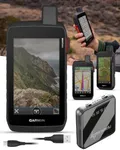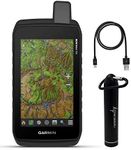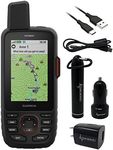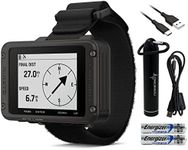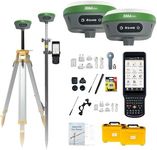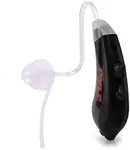Buying Guide for the Best Handheld Gps
Choosing the right handheld GPS device can greatly enhance your outdoor adventures, whether you're hiking, geocaching, or exploring new terrains. The key is to understand the various features and specifications that can impact your experience and match them to your specific needs. Here are some important specs to consider when selecting a handheld GPS device.Display Size and ResolutionThe display size and resolution determine how easily you can read maps and data on your GPS device. Larger screens with higher resolution provide clearer and more detailed visuals, which can be crucial when navigating complex terrains. If you often find yourself in situations where quick and accurate map reading is essential, opt for a device with a larger, high-resolution screen. For casual use or simpler navigation, a smaller screen may suffice.
Battery LifeBattery life is a critical factor, especially for extended outdoor activities. Handheld GPS devices can have varying battery life, ranging from a few hours to several days. If you plan on long hikes or multi-day trips, look for a device with longer battery life or one that supports replaceable batteries. For shorter outings, a device with moderate battery life may be adequate.
Durability and Waterproof RatingDurability and waterproof rating indicate how well the device can withstand harsh conditions. A rugged, waterproof GPS device is essential for activities in challenging environments, such as hiking in the rain or kayaking. Devices are often rated with IPX standards, where higher numbers indicate better water resistance. Choose a device that matches the conditions you expect to encounter.
Satellite ReceptionSatellite reception affects the accuracy and reliability of your GPS device. Devices that support multiple satellite systems (like GPS, GLONASS, and Galileo) tend to offer better reception and faster position fixes, especially in areas with poor signal. If you frequently navigate dense forests or deep valleys, opt for a device with robust satellite reception capabilities.
Mapping and Navigation FeaturesMapping and navigation features include preloaded maps, the ability to add custom maps, and navigation aids like waypoints and route planning. Advanced mapping features can be very useful for detailed navigation and planning. If you need precise navigation and detailed maps, choose a device with comprehensive mapping capabilities. For basic navigation, simpler features may be sufficient.
User Interface and Ease of UseThe user interface and ease of use determine how intuitive and straightforward the device is to operate. A well-designed interface with easy-to-navigate menus and controls can make a big difference, especially in stressful situations. If you're new to GPS devices or prefer simplicity, look for a device with a user-friendly interface. More experienced users might appreciate advanced features and customization options.
Additional FeaturesAdditional features can include things like Bluetooth connectivity, camera, altimeter, barometer, and more. These features can enhance your experience and provide extra functionality. Consider what additional features might be useful for your activities. For example, a built-in camera can be great for documenting your adventures, while an altimeter and barometer can be useful for mountaineering.


